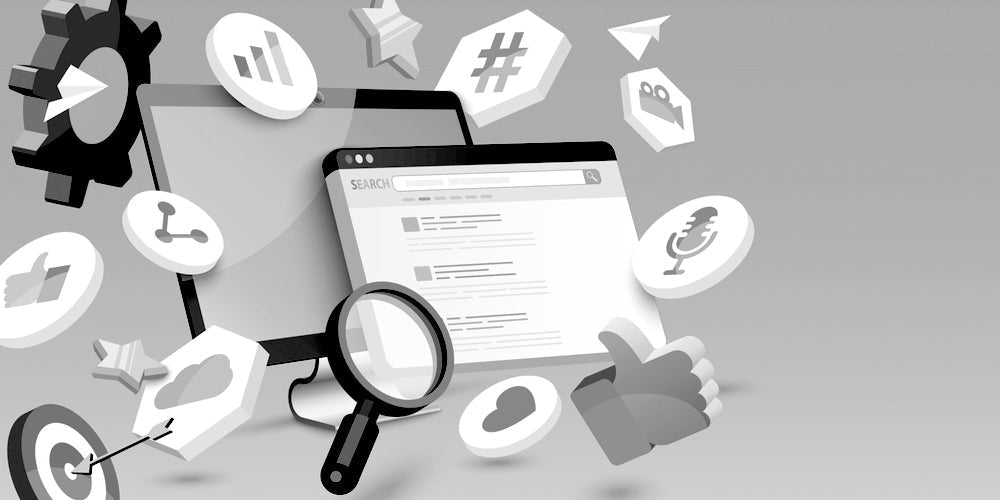
Shopify Speed Enhancement: 8 Hacks To Improve Page Speed Score
‘Time is money' - The loading time of your website is crucial as it directly affects the traffic received on your website. And, in the case of an eCommerce website, page speed influences the conversions on the store.
The primary reasons why people prefer online shopping over conventional shopping are convenience and saving time. If a website takes forever to load, the essence of online shopping, i.e., saving time, is brutally killed. Let’s take an example to clarify it further. Imagine you walk to a store to purchase a few things. The shopkeeper takes forever to open the gates of his shop; when you enter inside and ask a sales rep to bring you your desired articles, he moves slowly and brings back each piece after 10 minutes. Would you stand there and waste your time, or instead go to a store that quickly provides you with your goods?
Similar is the case with online users. If your website takes longer than 3 seconds to load, 40% of your traffic will be lost. Some of your visitors might even switch to some other website, probably your rivals’. Thus, once you succeed in attracting people to your store, ensure not to force them to leave because of the slow speed of your website.
In today’s article, we present some easy tips and tricks to optimize your Shopify website speed.
Top 8 Easy Hacks To Improve Your Shopify E-Commerce Store
1. Switch To Single High-Quality Hero Image
Sliders enable sellers to display multiple product pictures on their homepage. It looks attractive and allows visitors to get an idea about the store’s different goods in stock. The high-quality images combined with transitions take time to load when the user clicks the link to the homepage. It increases the loading time, which is a big turn-off for visitors, and they will not take a second to think before pressing the back button of their browsers. To make your web pages load faster, remove the slider and switch to a single high-quality hero image and a clear call-to-action (CTAs).
2. Compress And Reduce Images
Images are the lifeblood of every eCommerce store. A store without images is like a retail store without products. To make the store look attractive and provide the people with a better idea of the goods, sellers must upload numerous product pictures from different angles. While this may allow visitors to view the products better, each image contributes to the website’s loading time. Removing the pictures is not a viable solution for Shopify speed optimization; thus, the practical solution for this problem is to compress the image size to make them load faster. There are many plugins available that can help you compress image files and quickly load your web page. Don’t worry; the plugins will not harm your picture quality. Your images will remain the same except for their file sizes. Once all your images are optimized, the loading time of the page will reduce drastically.
3.Choose A Fast Theme
Selecting a theme for any online stores is the most critical decision for a merchant. The theme acts as a storefront for online shops. Attractive and appealing storefronts entice prospects to explore the store and learn more about the business. Hence, choose a theme that aligns with your brand’s idea, voice, products, and your potential audiences. In addition, look for themes that are fast and take minimal time to load the page. Selecting the themes with numerous sliders, fancy animations, advanced navigation systems, etc., will affect your page speed. As every extra element will add load on your web page, it will take time to load the page. Before finalizing the theme, we strongly recommend running the theme’s preview on Google Page Speed Insights. It will display the web page’s speed and make relevant suggestions to decrease the loading time and improve the user experience.
4. Lazy Load Images
Doesn’t it infuriate you to see a web page whose images take forever to load? And the frustration multiplies when pictures on the product page take an eternity to load. Slow-loading photos put the customer in a bad mood, and he dismisses the idea of exploring your store and ordering the articles that caught his attention.
ECommerce websites are pretty huge and have numerous pages. When a person clicks on the website’s link, the browser has to get in action and download all the content available on the pages to make it ready for the user to browse the web pages. Thus, the browser takes time to load all the contents, making visitors agitated and annoyed. Lazy-loading works on the principle of demand and supply. The browser only loads the content that the visitor will first see, i.e., above-the-fold content. The content below the fold will not be displayed until the visitor scrolls down. Since the browser doesn’t have to load the entire website content simultaneously, it reduces page loading time and makes the web page load immediacy.
5. Integrate AMP Pages For Your Website
AMP or Mobile Accelerated Pages refers to a standard framework designed to enable the seller to create fast-loading web pages for mobile devices. Smartphones are no longer a luxury item; instead, they’ve become necessary in this fast-paced world. Gone are those days when people used to use their cell phones for communication only. In the current era, people take their online classes, transfer funds, browse websites, and even shop online, apart from simply communicating.
6. Minimize The Number Of Apps Installed
Apps are super helpful, especially when you have no coding background. You can integrate any feature on your Shopify website just by installing the right app for it. For instance, an eCommerce store can download a live chat app instead of building it from scratch. But, installing these apps is a downside; they add load on your web pages, even when they are not in use. These apps contain numerous JS and CSS files that run in the background, reducing the speed of your website.
Hence, if your website speed is suffering, it’s time to check the installed apps and remove the ones you no longer need. You might find a few apps that you installed to check how they functioned and forgot to uninstall them. Similarly, if there are any apps that you no longer require, for example, a slider app, or a fancy loader app, remove it to reduce the web page’s load. Another helpful trick to increase your page speed is to remove the app you believe increases the loading time. Run your website without it and note down how quickly your page loaded. Find an alternative for the removed app, install it, and load your page again to check the difference in loading time. Repeat it with other installed apps to discard all the apps that slow down your web page’s speed.
7.Fix Broken Links
Every seller endeavors to provide an unforgettable experience to its users. We believe you want that too. Therefore, minimize the redirects and broken links. If your website has too many redirects and broken links, it can create a performance issue and deteriorate the user experience. In addition, it also affects your SEO which impedes websites’ ranking and visibility on search engine result pages.
8. Analyze Web Page Performance
The last tip on the list is to analyze your web pages on Google PageSpeed Insight to identify the areas of your website that increase the loading time and work on the provided suggestion to reduce loading time and improve website speed and performance.
Following are some of the critical elements revealed by Google PageSpeed Insights for mobile and desktop websites:
- Minify CSS, JavaScript
- Optimize pictures
- Remove render-blocking CSS and JS in above-the-fold web page content
- Reduce server response time
- Use browser caching
- Eliminate landing page redirects
- Compress
Analyzing your website performance on Google PageSpeed can help identify the elements that add load to your website and fail to load quickly.




